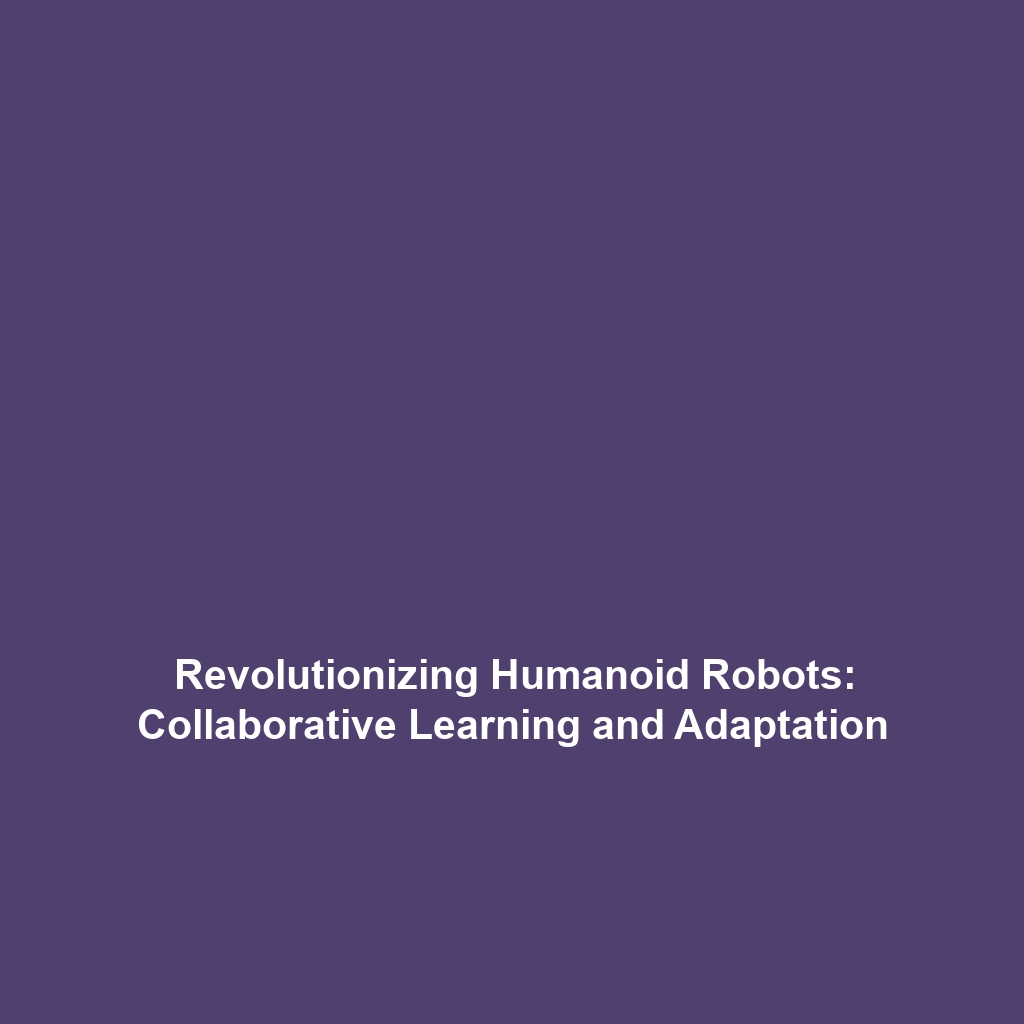Collaborative Research Efforts in Creating Robots That Learn and Adapt Like Humans
Introduction
The pursuit of humanoid robots that can learn and adapt like humans represents a groundbreaking leap in robotics. Collaborative research efforts worldwide aim to fuse artificial intelligence with robotics, enabling machines to understand and respond to their environments in human-like ways. This initiative not only enhances the efficiency of robots but also has the potential to revolutionize sectors such as healthcare, manufacturing, and personal assistance, highlighting its significance within the broader context of humanoid robots.
Key Concepts
Understanding Human-Like Learning
At the core of these collaborative research efforts lies the concept of machines learning through experience, akin to human learning processes. Key principles include:
- Machine Learning: Algorithms that allow robots to improve their performance over time based on data input.
- Neuro-Inspired Networks: Systems modeled after human brain functions to achieve complex pattern recognition and decision-making.
- Human-Robot Interaction: The study of how humans and robots can work together, improving cooperation and enhancing task efficiency.
These concepts lay the foundation for developing humanoid robots that can adapt to dynamic environments, ensuring a closer alignment to human capabilities.
Applications and Real-World Uses
Collaborative research in creating robots that learn and adapt has significant implications across various industries. The following real-world applications exemplify how humanoid robots are being employed:
- Healthcare: Robots assist in patient care and rehabilitation, adapting to individual needs and preferences.
- Manufacturing: Intelligent robots work alongside human workers, learning from their actions to optimize productivity.
- Service Robots: Humanoid robots provide customer service in retail, evolving their interactions based on customer feedback.
These applications clearly demonstrate the transformative power of collaborative research in humanoid robots.
Current Challenges
Despite significant advancements, several challenges persist in the field:
- Technical Limitations: Many adaptive robots struggle with complex environments.
- Safety Concerns: Ensuring safety in human-robot interactions is vital for public acceptance.
- Ethical Issues: Balancing privacy and data security with AI learning capabilities raises ethical dilemmas.
Addressing these challenges of creating robots that learn and adapt is crucial for the successful integration of humanoid robots in society.
Future Research and Innovations
The future of collaborative research in humanoid robots looks promising, with several innovations on the horizon. Upcoming breakthroughs include:
- Enhanced AI Algorithms: More sophisticated learning models that improve adaptability and efficiency.
- Improved Sensory Technologies: Innovations in robotics sensors that allow for better environmental interaction.
- Social Robots: Development of robots with advanced emotional learning capabilities to interact empathetically with humans.
These innovations highlight the potential for humanoid robots to become increasingly integrated into everyday life.
Conclusion
Collaborative research efforts aimed at creating robots that learn and adapt like humans have the potential to reshape various industries, leading us to a future where humanoid robots are commonplace. As research progresses, it is essential to address the associated challenges to fully harness the benefits of these advanced robotic systems. For further insight into the world of robotics, explore our other articles on AI-driven robots and robotics in healthcare.









